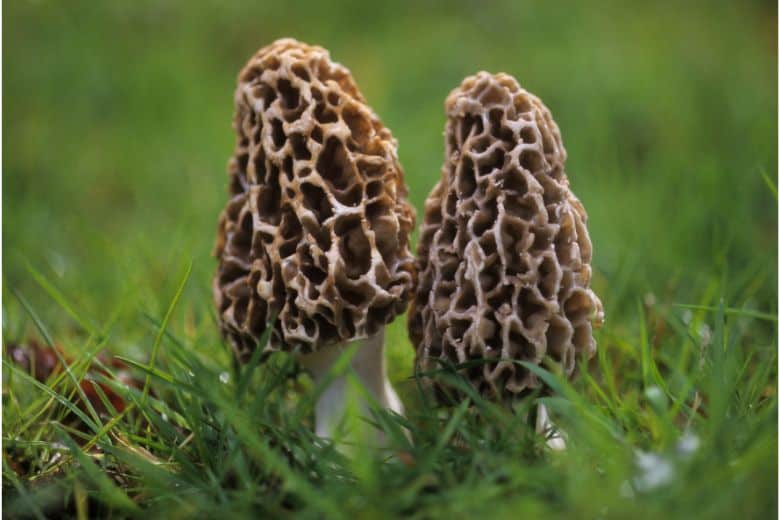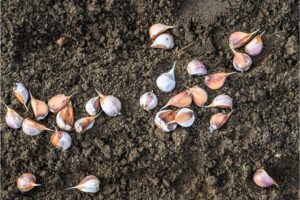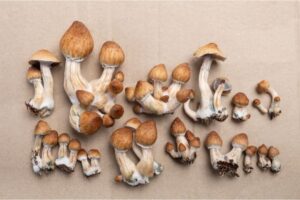
Morels are prized edible mushrooms known for their distinctive flavor and unique appearance. Understanding the optimal soil temperature and how to maintain it is essential for maximizing your chances of a bountiful morel harvest.
However, morel mushrooms have a short and specific growing season, and the soil temperature must reach at least 50°F (10°C) before morel mushrooms can start to grow. This temperature needs to be maintained for at least a few weeks for the mushrooms to develop fully. Warmer temperatures can increase the rate of growth, but temperatures over 70°F (21°C) can be detrimental and cause the mushrooms to rot.
Therefore, gardeners must pay close attention to the soil temperature in order to have a successful morel mushroom crop.
Let’s delve into the fascinating world of soil temperature and its impact on morel mushrooms.
What is Soil Temperature?
Soil temperature refers to the measurement of heat within the soil. It plays a vital role in the growth and development of mushrooms, including morels. Soil temperature influences various biological processes, such as microbial activity, nutrient availability, and the metabolism of fungi.
How Soil Temperature Affects Morel Mushrooms:
Morel mushrooms are highly sensitive to soil temperature variations. They have specific temperature requirements for fruiting and mycelium growth. Understanding these temperature preferences is crucial for creating optimal growing conditions.
- Fruiting Temperature: Morels typically require a soil temperature range of 50-60°F (10-15.5°C) for fruiting. This temperature range stimulates the development of fruiting bodies known as ascocarps. If the soil temperature falls outside this range, the fruiting process may be delayed or inhibited.
- Mycelium Growth Temperature: The mycelium, the vegetative part of the fungus, also requires specific temperature conditions for optimal growth. Morel mycelium thrives in soil temperatures ranging from 45-55°F (7-13°C). Maintaining the appropriate temperature range enables the mycelium to establish and spread throughout the growing medium, ultimately leading to the formation of fruiting bodies.
How to Maintain Soil Temperature for Morel Mushrooms:
Now that we understand the significance of soil temperature for morel mushrooms let’s explore some practical methods to maintain the ideal temperature range:
Method 1: Site Selection:
Choose a location for your morel mushroom bed that naturally provides the desired soil temperature range. Consider factors such as sun exposure, soil composition, and microclimate. North-facing slopes or areas with partial shade can help regulate soil temperature and prevent excessive heat buildup.
Method 2: Mulching:
Applying a layer of organic mulch, such as straw or wood chips, helps insulate the soil and regulate temperature fluctuations. Mulch acts as a natural buffer, keeping the soil cooler during hot periods and warmer during cooler periods. It also helps retain moisture, which is beneficial for morel mushroom growth.
Method 3: Irrigation:
Watering your mushroom bed can help regulate soil temperature. Moist soil retains heat more effectively than dry soil. However, avoid overwatering, as excessive moisture can lead to fungal diseases or waterlogged conditions. Maintain a consistent moisture level to promote healthy mycelium growth.
Method 4: Soil Amendments:
Amending your soil with organic matter, such as compost or well-rotted manure, can improve soil temperature regulation. Organic matter helps retain moisture and provides a stable environment for mushroom mycelium.
Method 5: Cold Frames or Tunnels:
In colder climates or during early spring, you can create makeshift structures like cold frames or tunnels to protect your morel mushroom bed from extreme temperature fluctuations. These structures trap heat and create a microclimate, allowing you to control the soil temperature more effectively.
How to Monitor Soil Temperature
Monitoring soil temperature is crucial for maintaining optimal growing conditions for various plants, including morel mushrooms. Here are a few methods you can use to monitor soil temperature:
1. Soil Thermometer:
A soil thermometer is a simple and effective tool for measuring soil temperature. It consists of a long probe that can be inserted into the soil to provide an accurate reading. To use a soil thermometer, insert the probe into the soil at the desired depth (usually around 4-6 inches or 10-15 cm). Leave it in place for a few minutes to allow the thermometer to adjust to the soil temperature, then read the temperature from the display.
2. Digital Soil Temperature Sensor:
Digital soil temperature sensors are electronic devices that provide real-time temperature readings. These sensors are inserted into the soil and connected to a digital display or a data logger. They often come with a waterproof casing to protect the sensor from moisture damage. Digital soil temperature sensors can provide continuous monitoring, allowing you to track temperature fluctuations over time.
3. Wi-Fi or Bluetooth Soil Temperature Sensors:
Wi-Fi or Bluetooth-enabled soil temperature sensors allow you to monitor soil temperature remotely using your smartphone or a computer. These sensors are placed in the soil, and the temperature data is transmitted wirelessly to a designated device. With the help of a corresponding mobile app or software, you can easily monitor and analyze the soil temperature readings from anywhere with an internet connection.
4. Weather Stations:
Some weather stations come with soil temperature sensors as part of their package. These weather stations typically consist of a base unit that collects data from various sensors, including soil temperature sensors. The data is then displayed on a console or transmitted to a computer or mobile device. Weather stations provide comprehensive weather information, including temperature, humidity, and rainfall, making them suitable for gardeners and agricultural applications.
5. Data Loggers:
Data loggers are devices that record and store temperature data over time. They can be used in conjunction with soil temperature sensors to monitor and log soil temperature readings at regular intervals. Data loggers can be programmed to record temperature data at specific time intervals, allowing you to analyze temperature patterns and trends. Some data loggers can also be connected to a computer or mobile device for real-time monitoring.
Note:
When monitoring soil temperature, you need to place the sensor or thermometer at the appropriate depth for the specific plant or crop you are growing. Different plants have different root depths, and the soil temperature at the root zone is more relevant for plant growth than the temperature at the surface.
By regularly monitoring soil temperature, you can ensure that your morel mushrooms (or any other plants) are within their preferred temperature range, allowing you to make necessary adjustments to maintain optimal growing conditions.
Frequently Asked Questions
What is the optimal soil temperature for morel mushroom growth?
Answer: The optimal soil temperature for morel mushroom growth is between 55-60°F (12-15°C).
How long does it take for morel mushrooms to grow in the soil?
Answer: Morel mushrooms typically take between 4-8 weeks to grow in the soil, depending on the environmental conditions.
What other conditions are necessary for morel mushroom growth?
Answer: In addition to the optimal soil temperature, more mushrooms require moist soil, adequate drainage, and a moderate amount of sunlight.
Conclusion
Achieving the optimal soil temperature for morel mushrooms is a critical factor in successful cultivation. By understanding the temperature requirements for fruiting and mycelium growth and implementing strategies to maintain the ideal temperature range, you can enhance your chances of a fruitful harvest. Experiment with different techniques and observe the response of your morel mushrooms to find the most effective approach for your specific growing conditions. Happy morel mushroom cultivation!





One Comment